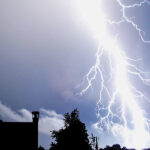Rigging for live entertainment production has become more complex. Along with the growth in the sheer weight of all the lighting, sound and video gear now suspended over performers and the audience, other rigging complexities range from flying human performers to moving truss.
As a natural consequence, new technologies, and safety standards, have emerged. A significant development is the use of load monitoring technologies to eliminate the guesswork and verify actual, real-time loads occurring at individual rigging points and hoists. And industry standards endorsing their use have emerged as well.
SQP2
Germany’s SQP2 Chain Hoist standard was among the first. Developed with input from German trade groups representing theatre technicians (DTHG), event technicians and rental companies (VPLT), convention centers (EVVC) and exhibition booth builders (FAMAB), along with the German equivalent to OSHA in the U.S. (the BG), SQP2 emerged in Oct. 2010.
Major German venues now using load monitoring technologies include Olympiapark Munich, the Nuremberg Exhibition Center and the Dresden State Opera. As with other German industrial standards, SQP2 is helping shape the pan-European CWA 15902 code of practice that, while voluntary, and one step below EN standard status, also outlines the safety advantages of load monitoring technologies.
For an industry as international as live entertainment, it’s not surprising that the load monitoring practices now common in Europe are also being seen more often on this side of the Atlantic and beyond. Venues and rigging companies that have adopted load monitoring technologies include Kish Rigging, The Orange County Convention Center, The Boston Symphony Orchestra Center, The Seattle Opera, Hall Associates, and tours for top bands such as AC/DC.
Load Monitoring Benefits
 The reason load cell monitoring technologies have become more prevalent around the world is because they can replace guesswork with real-time data — and that becomes particularly important for anyone working with a large grid with dynamic loads.
The reason load cell monitoring technologies have become more prevalent around the world is because they can replace guesswork with real-time data — and that becomes particularly important for anyone working with a large grid with dynamic loads.
“There is no way that you can just level it by using tape measures,” notes Martin Gehring, an owner at Dart GmbH, a German rigging company that has supported tours for Rammstein’s world tour using Ron StageMaster load cells from Eilon Engineering. For one of Rammstein’s tours, the rig included 20 truckloads of gear weighing close to 40 tons, and each of the 15 2-ton motors on the journey were equipped with the load-monitoring devices.
Ease of installation, Gehring says, is a key advantage. And since time is money, particularly on tour, the load-monitoring devices also promise economic as well as safety advantages, with benefits ranging from lower insurance premiums to the ability to eliminate the need for additional equipment as a safety redundancy. “To be able to control the weight every day helped us also to get approval for smaller venues from house engineers where we’ve been very close to the overall weight capacity of the roof,” Gehring says.
Another early adopter of load-monitoring technologies is Peter Bretherton, technical manager of staging at Esplanade Co Ltd in Singapore, who has been using the Ron StageMaster 6000 (RSM) wireless load monitoring system for Esplanade — Theatres on the Bay since April, 2008. Bretherton credits the system not just for the safeguard of its promised real-time detection of possible failures, but for its versatility as well.
“Our RSM 6000 has been used in a wide range of applications from monitoring loads in our roof truss system, checking the tensions in guy lines, establishing and monitoring loads in human flying systems, determining how heavy “that” set piece is before it is hung and even checking the weights of flight cases before shipping,” Bretherton says. “I have also used the system on several occasions to assist in the designing and testing of complex load sharing systems. The accuracy of the RSM allows you to test on a smaller scale, to be certain of the loads, forces and methods, before moving up to the real thing.”
Early Warnings
 Bretherton isn’t the only one who has found the devices useful for monitoring tension on guy wires. “I first purchased a wireless load cell monitor for use with my flying systems for the Calgary Stampede Grandstand Show,” where a variety of performers including dirt bike riders, Taiko drummers, dancers and silk artists all perform above the outdoor audience, notes Tracy Nunnally, president of Hall Associates Flying Effects. “By placing a load cell monitor on each of the lift lines, I am able to monitor the tension on each line. This allows me to balance the loads on each line at set points in the cueing process and set an alarm on each line that will sound if a line passes its overload point. The alert is activated several seconds before the issue is visible to the naked eye, giving me the necessary time to react to the situation,” Nunnally says.
Bretherton isn’t the only one who has found the devices useful for monitoring tension on guy wires. “I first purchased a wireless load cell monitor for use with my flying systems for the Calgary Stampede Grandstand Show,” where a variety of performers including dirt bike riders, Taiko drummers, dancers and silk artists all perform above the outdoor audience, notes Tracy Nunnally, president of Hall Associates Flying Effects. “By placing a load cell monitor on each of the lift lines, I am able to monitor the tension on each line. This allows me to balance the loads on each line at set points in the cueing process and set an alarm on each line that will sound if a line passes its overload point. The alert is activated several seconds before the issue is visible to the naked eye, giving me the necessary time to react to the situation,” Nunnally says.
“During the 10th performance in 2009, we experienced a windy rainstorm during the Acrospan flying sequence,” Nunnally recalls. “The wind tore a tarp off equipment located near the flying winches. It blew into winch #3 and wound around the drum and cable. As the winch began to bog down, the monitoring system sounded an overload alarm, and I stopped the Acrospan as it was lowering toward the stage.
“To rule out a computer problem, I attempted to run the frozen winch down with manual control, but it would not move,” Nunnally adds. “Writing off this winch, I was able to use manual controls to jog the remaining winches into a position that allowed the artists to safely exit the Acrospan. I slowly executed each jog move while watching the readings on the monitoring system program display, ensuring that the remaining three lines were sharing the load.”
Human Flying Systems
 Nunnally has also used load-monitoring devices for monitoring loads in human flying systems. “In May 2010, I used the load cells for a large cultural event in Barcelona, Spain, to help determine the load distribution for flying a human castle,” he recalls. “For this project, I was able to use load cells to monitor the weight on each of the four lines as I added artists to the castle. This allowed me to ensure that the frame would fly level and true, and all support lines would equally share the load. Again, the load cells worked beautifully, and it was so nice to be able to fly the frame through three dimensions and receive a constant feed of data from the load cells.”
Nunnally has also used load-monitoring devices for monitoring loads in human flying systems. “In May 2010, I used the load cells for a large cultural event in Barcelona, Spain, to help determine the load distribution for flying a human castle,” he recalls. “For this project, I was able to use load cells to monitor the weight on each of the four lines as I added artists to the castle. This allowed me to ensure that the frame would fly level and true, and all support lines would equally share the load. Again, the load cells worked beautifully, and it was so nice to be able to fly the frame through three dimensions and receive a constant feed of data from the load cells.”
If many have found the systems beneficial during performances, others have found the load monitoring devices useful well before a given event, in the design phase. That was the case for Hiroki Matsunobu, manager of the engineering department at Japanese production company Shimizu Octo, which engineered and built a new roof system for a major music event known as ap bank fes ’10. He used the devices for a structural strength test that measured load deflection per extracted load. During the inspection process, the devices helped verify the self-weight of the roof truss and load deflection, among other data. “After finishing the inspection process, we were able to safely provide our client with the roof truss,” Matsunobu says.
For more information, go to www.eilon-engineering.com.

